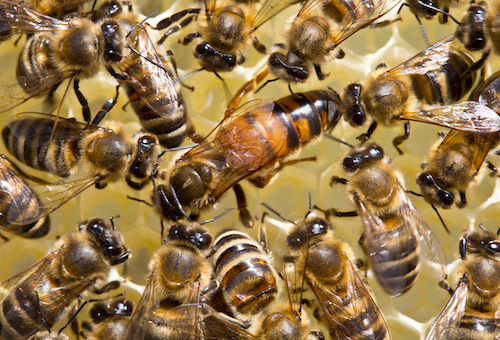 by Véto-pharma
by Véto-pharma After honey harvesting, it is essential to conduct a thorough inspection of the colonies to ensure their overall health and stability. The removal of frames and supers can significantly disturb the bees, necessitating a focused approach during the beekeeper’s visit. Key areas of attention should include:
A prompt examination of the central frames is critical to verify recent egg-laying activity or to visually confirm the queen’s presence, ensuring she has not sustained any damage during handling1.

Continuous vigilance for signs of illness is imperative. This involves scrutinizing the brood, breeding frames, and hive bottoms. Varroa mite treatment, typically administered at the end of summer or autumn, is often applied post-harvest. This timing minimizes honey residue, facilitates easier handling without supers, and optimizes treatment efficacy in a reduced hive volume. Additionally, this period usually coincides with a natural decline in brood as the colony prepares for winter 2,3.
Beekeepers should assess the hive’s nutritional status and food reserves in anticipation of the upcoming weeks or months and potential floral blooms. It is advisable to leave any honey produced after this point in the hive unless late blooms of commercial interest are available. Honey that is not fully capped (less than three-quarters of the cells capped) should remain as food reserves, along with an evaluation of remaining pollen stores4.
This final preparation for winter should occur once the productive season has concluded. The brood chamber space should be reduced, with food reserves arranged around the brood frames to mimic the natural organization of a colony: honey at the periphery, pollen adjacent to the brood, and all brood clustered together. It is crucial to adjust the number of frames according to the colony’s vigor; if the colony is small, transferring it to a nucleus may be beneficial. While bees do not heat the entire hive, they maintain warmth in the center of the winter cluster, necessitating the avoidance of excessive space around them. Accessible food sources should be provided to prevent temperature loss during retrieval. If the bees do not cover all the combs, space can be minimized using a plastic sheet or divider board. Additionally, reducing the hive entrance size is recommended to deter intruders and cold air.5

In summary, hives should be prepared to reduce the need for frequent visits and disturbances while ensuring good health and nutritional status.
References:
 by Antonio Pajuelo
by Antonio Pajuelo  by Véto-pharma
by Véto-pharma  by Véto-pharma
by Véto-pharma Join the Véto-pharma community and receive our quarterly newsletter as well as our occasional beekeeping news. You can unsubscribe at any time if our content does not suit you, and your data will never be transferred to a third party!
© 2019-2025, Véto-pharma. All rights reserved